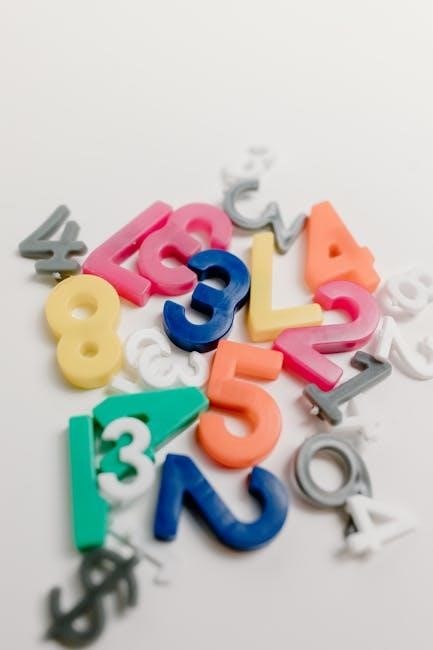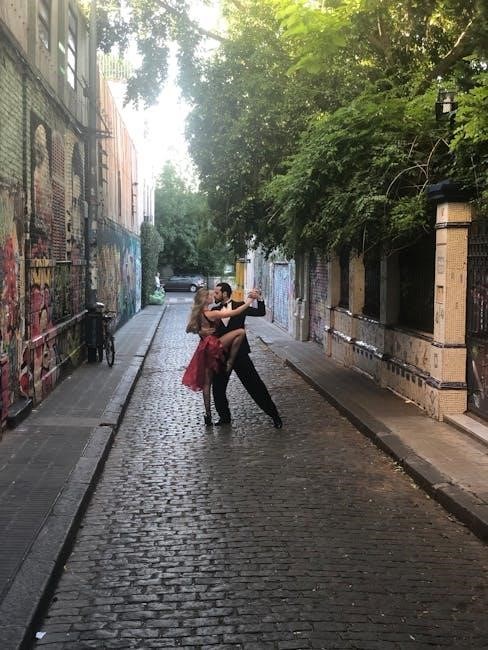
and tango makes three pdf
And Tango Makes Three is a heartwarming children’s book inspired by the true story of two male penguins, Roy and Silo, at Central Park Zoo.
1.1 Overview of the Book
And Tango Makes Three is a charming children’s book written by Justin Richardson and Peter Parnell, with illustrations by Henry Cole. Published in 2005 by Simon & Schuster, the story is based on the real-life events of two male penguins, Roy and Silo, at New York City’s Central Park Zoo. The narrative follows their unique journey as they form a family by adopting and raising a chick named Tango. The book is designed for young readers, with simple yet engaging text and beautiful artwork that captures the heartwarming story. It is structured to gently challenge traditional notions of family while celebrating love, diversity, and acceptance. The 32-page board book has become a popular choice for discussions about family structures and inclusivity.
1.2 Importance of the Story
And Tango Makes Three holds significant importance as it gently challenges societal norms about family structures. By sharing the true story of Roy, Silo, and Tango, the book promotes acceptance and inclusivity, encouraging children to embrace diversity. Its simple yet powerful narrative makes it an essential tool for teaching kids about the many forms love and family can take. The story’s focus on empathy and understanding has made it a valuable resource for fostering open conversations about LGBTQ+ families and non-traditional relationships. The book’s recognition and acclaim highlight its role in shaping a more inclusive and compassionate society, making it a timeless and impactful read for all ages.

Background and Inspiration
And Tango Makes Three is inspired by the true story of Roy and Silo, two male penguins at Central Park Zoo, written by Justin Richardson and Peter Parnell to promote inclusivity, with Henry Cole’s illustrations beautifully enhancing the narrative.
2.1 The True Story of Roy, Silo, and Tango
Roy and Silo, two male chinstrap penguins at Central Park Zoo, formed a devoted bond, mirroring many penguin pairs. They displayed unique behaviors, such as building nests together. When an egg was left unattended, zookeeper Mr. Gramzay entrusted it to them. They incubated it faithfully, and Tango hatched, becoming their adopted chick. This heartwarming tale challenges traditional family norms, showcasing love and dedication as the essence of parenthood. The story inspired Justin Richardson and Peter Parnell to write And Tango Makes Three, spreading a message of acceptance and inclusivity.
2.2 The Authors’ Vision and Intent
Justin Richardson and Peter Parnell crafted And Tango Makes Three to promote acceptance and inclusivity, challenging traditional notions of family. Their vision was to highlight that family is rooted in love and commitment, not just biology. By sharing the true story of Roy, Silo, and Tango, they aimed to foster empathy and understanding in young readers. The authors approached the topic with sensitivity, using simple yet powerful storytelling to convey their message. Their intent was to create a narrative that sparks conversations about diversity and encourages children to embrace differences, making it a valuable resource for discussions about family structures and inclusivity.

Themes and Messages
And Tango Makes Three explores themes of family diversity, love, and acceptance, emphasizing that family is rooted in care and commitment, not just biology.
3.1 The Concept of Family Diversity
And Tango Makes Three gently introduces the idea that families come in many forms. The story of Roy, Silo, and Tango challenges traditional notions by showing that love and care, rather than biology, define family. Through the penguins’ journey, the book highlights how non-traditional families, including same-sex parents, can create loving and nurturing environments. This theme encourages young readers to embrace diversity and understand that family is not limited to conventional structures. The narrative emphasizes acceptance and the importance of support, showing how the zookeeper and other animals celebrate Tango’s unique family. By fostering empathy, the book helps children recognize that love and commitment are the true foundations of family, regardless of its composition.
3.2 Promoting Acceptance and Inclusion
And Tango Makes Three serves as a powerful tool for promoting acceptance and inclusion by celebrating the unique bond between Roy, Silo, and Tango. The story challenges stereotypes and encourages readers to embrace differences, showing how love and care transcend traditional family structures. Through the zookeeper’s supportive actions, the book highlights the importance of acceptance and the role of community in fostering inclusivity. By portraying a same-sex couple raising a child, the narrative helps children understand that all families, regardless of their makeup, deserve respect and love. This heartwarming tale inspires empathy and openness, making it a valuable resource for teaching children about the beauty of diversity and the importance of inclusive communities.

Illustrations and Artwork
Henry Cole’s illustrations bring the story to life, showcasing the unique bond between Roy, Silo, and Tango with a touch of simplicity and emotional depth, enhancing the narrative beautifully.
4.1 The Role of Henry Cole’s Illustrations
Henry Cole’s illustrations play a vital role in And Tango Makes Three, bringing the heartwarming story of Roy, Silo, and Tango to life with simplicity and emotional depth. His artwork captures the unique bond between the penguin family, making their journey relatable and visually engaging. The illustrations not only complement the narrative but also emphasize the themes of family diversity and inclusion. Cole’s style, with its soft yet expressive lines, creates a warm and inviting atmosphere, allowing readers of all ages to connect with the story. By visually representing the penguins’ emotions and experiences, the illustrations enhance the book’s message about love and acceptance, making it a powerful tool for teaching children about diverse family structures.
4.2 Visual Representation of Penguin Families
The visual representation of penguin families in And Tango Makes Three is central to conveying the story’s message of family diversity and acceptance. Henry Cole’s illustrations beautifully depict the unique bond between Roy, Silo, and Tango, showcasing their daily interactions and emotions. The artwork highlights the penguins’ distinctive tuxedo-like feathers, emphasizing their individuality while fostering a sense of unity. By visually contrasting Tango’s family with others, the illustrations gently challenge traditional notions of family structure. The expressive and tender visuals make the story relatable and engaging, allowing readers to connect emotionally with the penguin family’s journey. This visual storytelling enhances the book’s ability to promote understanding and acceptance of diverse family forms.

Educational Value
And Tango Makes Three offers valuable lessons on family diversity, fostering empathy and inclusion. It serves as a powerful educational tool for discussions on diverse family structures and acceptance.
5.1 Teaching Children About Different Family Structures
And Tango Makes Three is an invaluable resource for teaching children about diverse family structures. By sharing the story of two male penguins raising their chick Tango, the book gently challenges traditional notions of family. It encourages children to think critically about what constitutes a family, emphasizing that love and care are the foundation rather than gender or societal expectations. The narrative is simple yet profound, making it accessible to young readers while fostering empathy and understanding. Teachers and parents can use this story to spark discussions about inclusivity, helping children appreciate the uniqueness of all families. The book also provides opportunities for classroom activities, such as writing welcoming cards for Tango or exploring how families can be formed in different ways.
5.2 Using the Book in Classroom Discussions
And Tango Makes Three serves as a powerful tool for classroom discussions, fostering empathy and understanding among students. Teachers can begin by showing the book’s cover and asking students to predict the story, encouraging curiosity and engagement. During reading, discussion questions like “How are Roy and Silo different from other penguins?” can spark conversations about diversity. Afterward, activities such as writing welcoming cards for Tango or exploring what makes a family can deepen comprehension. The book also helps children reflect on inclusion and empathy, making it an excellent choice for lessons on family structures and social-emotional learning. Its simple yet impactful narrative ensures it resonates with students of all ages.

Reception and Reviews
And Tango Makes Three has received widespread acclaim for its touching portrayal of family diversity. Reviewers praise its well-written text and deft touch, making it a welcome addition to inclusive family stories.
6.1 Positive Feedback and Acclaim
And Tango Makes Three has garnered significant praise for its heartwarming and inclusive storyline. Reviewers highlight its well-crafted text and gentle approach to challenging societal norms. The book’s ability to promote acceptance and celebrate diverse family structures has resonated with readers of all ages. Many applaud its role in fostering empathy and understanding, making it a valuable resource for discussions about love, family, and inclusion. The illustrations by Henry Cole further enhance the story, bringing the penguin family’s journey to life. This book is widely regarded as a poignant reminder that love is the foundation of any family, regardless of its structure.
6.2 Controversies and Challenges
And Tango Makes Three has faced significant challenges due to its portrayal of a same-sex penguin couple raising a chick. The book has been consistently listed on the American Library Association’s most challenged books, often cited for its depiction of LGBTQ+ themes and non-traditional family structures. Critics argue that the content is inappropriate for young children or conflicts with certain beliefs. Despite these challenges, supporters emphasize the book’s role in fostering acceptance and understanding, countering claims of inappropriateness by highlighting its educational value. The controversies have sparked debates about censorship and diversity in children’s literature, underscoring the importance of representing diverse families. The book remains a focal point in discussions about inclusivity and freedom of expression in educational settings.
Cultural Impact
And Tango Makes Three has become a cultural milestone, promoting LGBTQ+ representation and challenging traditional family norms, inspiring acceptance and fostering inclusivity in children’s literature worldwide.
7.1 Representation of LGBTQ+ Families
And Tango Makes Three beautifully represents LGBTQ+ families by sharing the true story of Roy and Silo, two male penguins who adopt an egg and raise their chick, Tango. This charming tale challenges traditional family norms and promotes acceptance of diverse relationships. By depicting a same-sex penguin couple building a loving family, the book provides a relatable and heartwarming story for children. It encourages young readers to understand that families come in many forms and that love is the foundation of any family. The story’s authenticity, based on real events at Central Park Zoo, adds depth to its message of inclusivity and diversity.
7.2 Influence on Children’s Literature
And Tango Makes Three has significantly influenced children’s literature by breaking ground in depicting LGBTQ+ families. Its gentle yet powerful storytelling has encouraged publishers to embrace diverse narratives, paving the way for more inclusive books. The story’s universal themes of love and family resonate widely, making it a landmark in promoting acceptance. It has become a cornerstone in discussions about representation, inspiring authors to explore similar topics. The book’s success demonstrates the demand for stories that reflect the diversity of real-world families, making it a pivotal work in modern children’s literature.
The Role of the Zookeeper
Mr. Gramzay, the zookeeper, played a pivotal role by supporting Roy and Silo, providing them with an egg to care for, which hatched into Tango.
8.1 Mr. Gramzay’s Support for Roy and Silo
Mr. Gramzay, the zookeeper at Central Park Zoo, played a crucial role in supporting Roy and Silo’s journey as a family. Recognizing their unique bond, he generously provided them with an abandoned egg, allowing them to fulfill their parental instincts. His compassionate intervention enabled the penguins to care for the egg, which eventually hatched into Tango. Mr. Gramzay’s actions not only highlighted his understanding of their relationship but also demonstrated his commitment to the well-being of the animals under his care. His support was instrumental in helping Roy, Silo, and Tango form a loving and unconventional family, showcasing the importance of empathy and acceptance in their story.
8.2 The Zoo’s Role in the Story
Central Park Zoo serves as the vibrant backdrop for the heartwarming tale of Roy, Silo, and Tango. The zoo’s diverse animal families create a unique setting where unconventional relationships like Roy and Silo’s can thrive. The zoo’s environment, with its naturalistic habitats and bustling activity, provides a sense of community and normalcy, allowing the penguins’ story to unfold naturally. The zoo also represents a place of learning and discovery, where visitors can observe and appreciate the beauty of diverse families. By fostering an inclusive environment, the zoo plays a pivotal role in the narrative, highlighting themes of acceptance and the importance of family in all its forms.

The Penguin Family’s Journey
Roy, Silo, and Tango’s journey is a touching tale of love, parenthood, and acceptance. The two male penguins form a devoted family, embracing challenges and joy together.
9.1 The Adoption of Tango
The adoption of Tango marks a pivotal moment in the story, as Roy and Silo, two devoted male penguins, welcome their chick. After finding an abandoned egg, they take turns incubating it, showcasing their dedication. With the help of zookeeper Mr. Gramzay, Tango hatches, bringing immense joy to the penguin pair. This heartwarming event highlights their nurturing instincts and commitment to parenthood. Tango’s arrival not only completes their family but also challenges traditional notions of family structures. The journey of Roy, Silo, and Tango exemplifies love’s power to overcome societal norms, creating a lasting impact on readers of all ages. Their story is a testament to the universal truth that family is built on love and care, regardless of form.
9.2 The Challenges Faced by Roy and Silo
Roy and Silo, the two male penguins at Central Park Zoo, faced unique challenges as they defied societal norms by forming a family. Their unconventional relationship attracted curiosity and scrutiny, as penguin pairs typically consist of one male and one female. Despite this, their dedication to each other and their desire to raise a chick remained unwavering. The zookeeper, Mr. Gramzay, played a pivotal role in supporting them by providing an abandoned egg, which they incubated together. Their journey was not without obstacles, but their perseverance ultimately led to the successful adoption of Tango. This story highlights the challenges of non-traditional families while celebrating their resilience and love. It serves as a powerful reminder of the importance of acceptance and understanding.
And Tango Makes Three leaves a lasting legacy by celebrating love, diversity, and the true meaning of family, inspiring acceptance and inclusivity for all readers.
10.1 The Lasting Legacy of the Book
And Tango Makes Three has left an indelible mark on children’s literature, fostering conversations about family diversity and inclusion. Its heartfelt story of Roy, Silo, and Tango challenges stereotypes, promoting acceptance of all families. The book’s legacy lies in its ability to spark important discussions, making it a timeless resource for educators and parents. By celebrating love in its many forms, it has become a classic, inspiring a more inclusive understanding of family. Its impact continues to grow, ensuring future generations embrace diversity with open hearts and minds.
10.2 Final Thoughts on Family and Love
And Tango Makes Three beautifully underscores the universal truth that family is rooted in love, not tradition. Roy, Silo, and Tango’s story shows that family can take many forms, challenging societal norms. The book reminds us that love transcends expectations, creating bonds that define family. By celebrating this unconventional yet heartwarming tale, it encourages readers to embrace diversity and understand that family is about care, commitment, and joy. Ultimately, the story leaves a profound message: love is the foundation of family, and its power knows no bounds. This resonates deeply, inspiring a more inclusive and compassionate view of family life for readers of all ages.